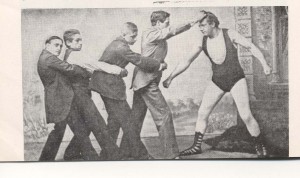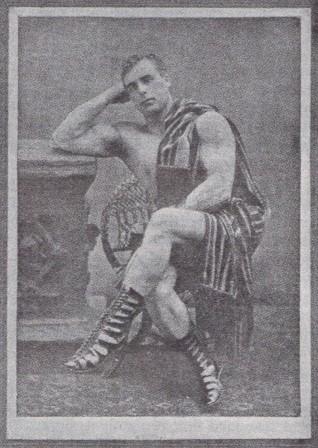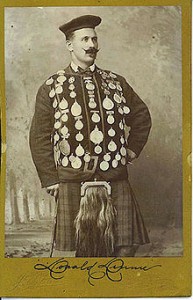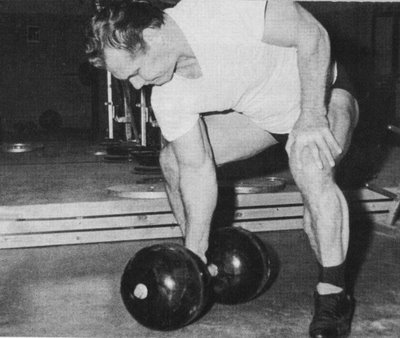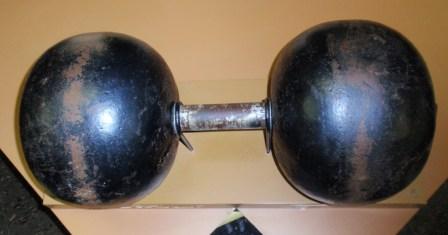The Rolling Thunder
by Al Myers
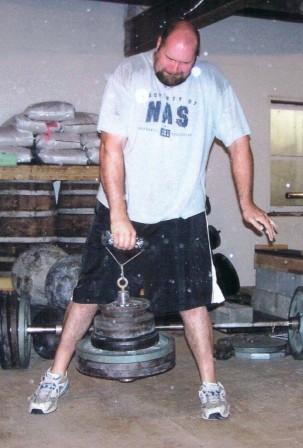
USAWA Grip Star, Matt Graham, lifting 275 pounds on the Rolling Thunder in training this past weekend. (photo by Bob Burtzloff)
One of the popular “grip toys” introduced by Randy Strossen and IronMind Enterprises is the Rolling Thunder. This grip device is different from anything else. I have never read about any type of gripping device similar to this used by Old-Time Strongmen. It is indeed a novel, unique idea!! Thanks to Randy and his promotion of it – the Rolling Thunder is now well-known within the “grip circle” and lifters in general. IronMind sells it for a modest $59.95 plus shipping, as advertised on the IronMind Website. For a price like that, buy the original and don’t waste your time trying to make your own or buying a knock-off. Afterall, don’t you want a original Rolling Thunder!
The Rolling Thunder consists of a rotating sleeved handle with 2.375″ diameter PVC, over a fixed handle shaft. It attaches to a loaded vertical bar. It is a one-hand lift that tests the grip like none other! When you lift using the Rolling Thunder, the handle feels like it wants to “roll” out of your hand allowing the weight to crash to the floor making a sound like thunder, and thus the name Rolling Thunder . It has been on the market since 1993. Randy initially promoted it by asking this simple question, “Will anyone EVER lift 300 pounds on the Rolling Thunder?”. It took several years, but finally the grip phenom/professional Strongman from England Mark Felix, broke this magic barrier. Felix currently holds the World Record at 301 pounds, set January 18th, 2008. The Rolling Thunder has gained such popularity that contests are ran that focus on it only. The Gillingham brothers have helped popularize it by having it as part of their GNC Grip Gauntlet, which they run in their booth at the Arnold every year.
The Rolling Thunder is not a USAWA event, but is often pulled out after meets for impromptu competitions. Last spring after the USAWA Dino Gym Grip Contest this was the case. Andy Durniat amazed everyone when he broke the Dino Gym record with a lift of 230 pounds! He did this AFTER the grip competition!!!
I consider anyone who can lift over 200 pounds on the Rolling Thunder as National Class, and those over 250 pounds World Class. The Rolling Thunder can be very humbling – often it seems “easy” moving up in weight, only to reach a point when you add another 5 pounds it becomes impossible!! If you don’t have a Rolling Thunder, go to IronMind Enterprises and order yours today. It will be an investment that you won’t ever regret.
